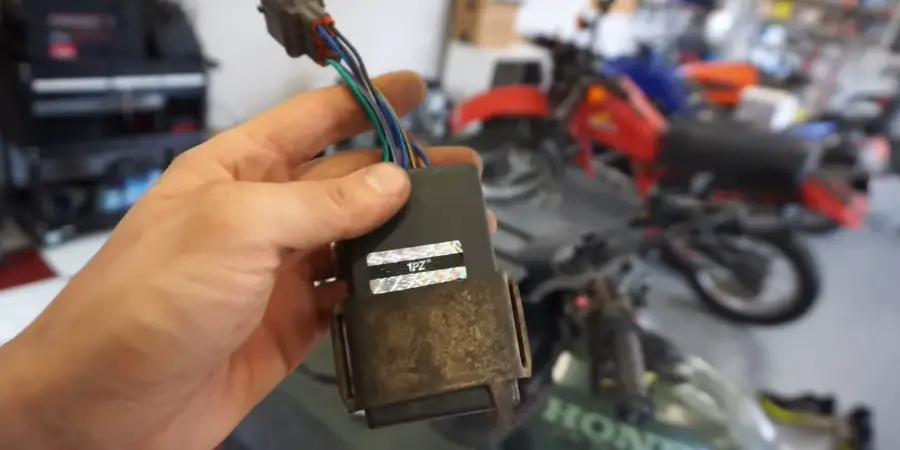How to Bypass a CDI Box on ATV: Simple ATV Hack
If you own an ATV, then you know that a CDI box is a crucial component that ensures the smooth running of the engine.
However, there might be situations where you need to bypass the CDI box to diagnose or repair a faulty system. We will discuss how to bypass a CDI box on an ATV.
What is a CDI box?
Before we dive into the process of bypassing the CDI box, let’s first understand what it is and what it does.
The CDI box, short for Capacitive Discharge Ignition, is an electronic device that controls the ignition timing of the ATV’s engine.
It stores and regulates the electrical charge that is sent to the spark plug, ensuring that it ignites at the right time.
Reasons to bypass a CDI box
There are several reasons why you might want to bypass the CDI box on your ATV.
The most common reasons are to diagnose a faulty CDI box, to check the ignition system, or to install an aftermarket CDI box.
Tools Required
To bypass the CDI box on your ATV, you will need a few tools, including a screwdriver, pliers, and a wire stripper.
Additionally, you will need a wiring diagram for your ATV to identify the wires that connect to the CDI box.
Step-by-step guide on how to bypass a CDI box on ATV
Now that you have an idea of what a CDI box is and why you might want to bypass it, let’s dive into the process of how to do it. The following are the steps you should follow:
Step 1: Disconnect the battery
The first step is to disconnect the battery from the ATV to avoid any electrical shock or short circuits.
You should locate the battery and disconnect the negative cable from the battery’s negative terminal.
Step 2: Remove the CDI box
Next, you need to locate the CDI box on your ATV. The CDI box is usually located near the engine or under the seat, and it is held in place by screws or bolts.
Use a screwdriver to remove the screws/bolts holding the CDI box in place.
Step 3: Identify the wires
With the CDI box removed, you can now identify the wires that connect to it. A wiring diagram for your ATV will come in handy here, as it will help you identify the wires that connect to the CDI box.
Step 4: Bypass the CDI box
To bypass the CDI box, you need to connect the wires that were connected to the CDI box directly.
You can use a wire stripper to strip off the insulation from the wires, and then connect them using wire connectors or electrical tape.
Make sure that you connect the wires properly to avoid any short circuits or electrical problems.
Step 5: Test the ignition system
With the wires connected, you can now test the ignition system to see if it is working correctly.
Reconnect the battery and turn on the ATV. If the engine starts and runs smoothly, then the ignition system is working correctly, and you have successfully bypassed the CDI box.
FAQs
Can a bike run without a CDI?
No, a bike cannot run without a CDI since it controls the ignition timing and without it, the spark plug will not ignite at the right time, and the engine will not start.
Can a CDI box cause no spark?
Yes, a faulty CDI box can cause no spark since it controls the electrical charge that is sent to the spark plug. If the CDI box fails to store or regulate the electrical charge, the spark plug will not ignite, resulting in no spark.
What are the symptoms of a bad CDI on an ATV?
The symptoms of a bad CDI on an ATV include a rough idle, difficulty starting the engine, poor performance, misfiring, stalling, and no spark. If you experience any of these symptoms, you might need to diagnose or replace the CDI box.
Can I use a different CDI box?
Yes, you can use a different CDI box on your ATV, but you need to make sure that it is compatible with your ATV’s make and model. Using an incompatible CDI box might cause damage to the engine or other electrical components.
Does changing CDI increase speed?
Changing the CDI box might increase speed, but it depends on the type of CDI box and the ATV’s engine. A performance CDI box might increase the engine’s RPM limit, resulting in higher speeds, but it might also cause damage to the engine if not used correctly.
How many volts is a CDI box?
A CDI box operates on high voltage, typically between 300 and 400 volts. The exact voltage might vary depending on the CDI box’s make and model and the ATV’s engine specifications.
Final thoughts
Bypassing the CDI box on your ATV is a simple process that can be done with a few tools and a bit of knowledge.
However, it is essential to note that bypassing the CDI box is not a permanent solution, and it should only be done for diagnostic or testing purposes.
If you have a faulty CDI box, it is recommended that you replace it with a new one.




